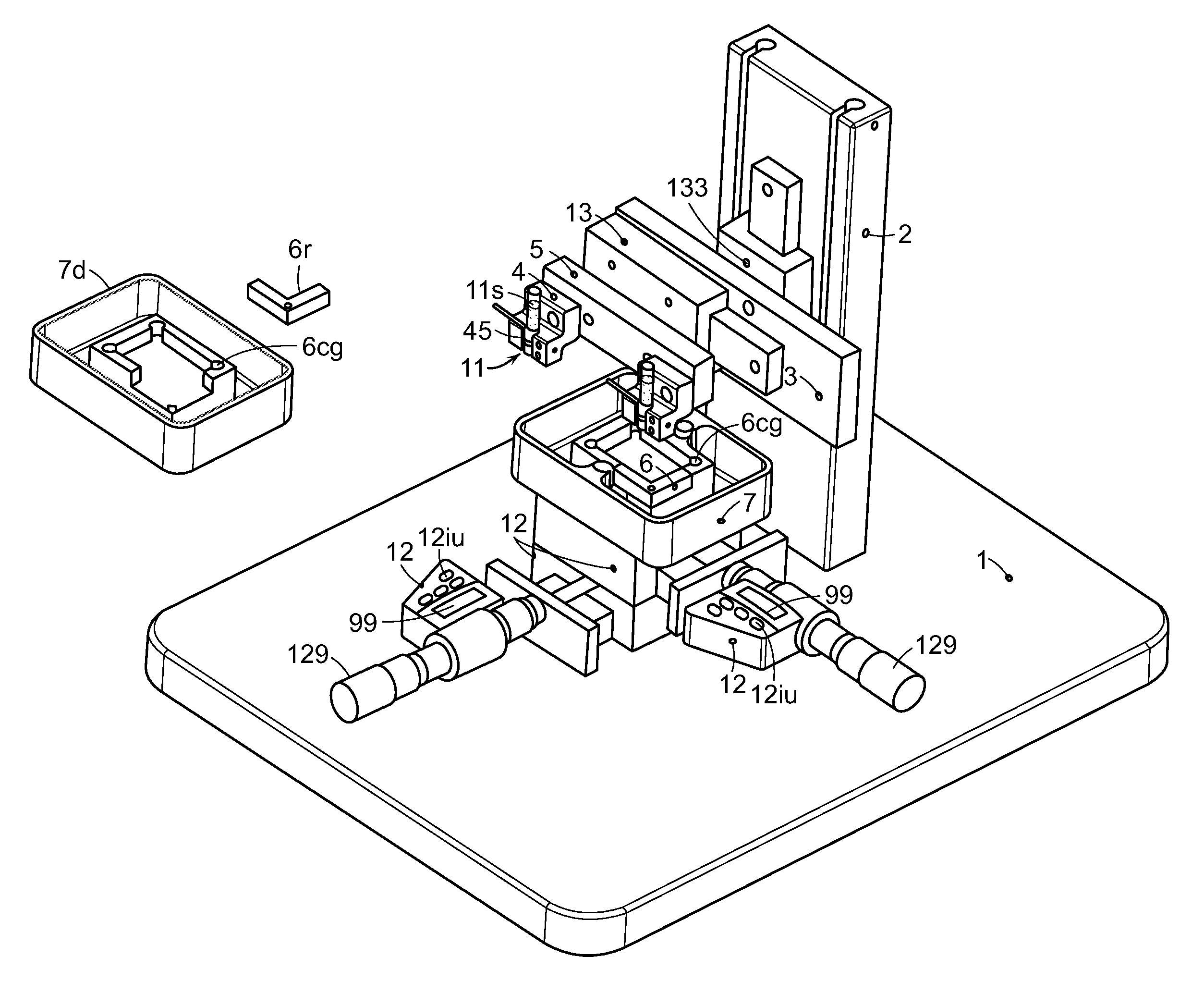Methods of making frozen tissue microarrays
a tissue array and microarray technology, applied in the field of frozen tissue arrays, can solve the problems of slow and tedious process, h&e can reveal only h&e can only reveal a limited amount of diagnostic information,
- Summary
- Abstract
- Description
- Claims
- Application Information
AI Technical Summary
Benefits of technology
Problems solved by technology
Method used
Image
Examples
Embodiment Construction
[0025]The invention provides a plurality of frozen tissue samples embedded in a single microarray block for generating hundreds of substantially identical frozen tissue microarrays and a precision instrument for generating the same. Frozen tissue microarrays according to the invention can be evaluated in high throughput parallel analyses using the same or different molecular probes, enabling gene identification, molecular profiling, selection of promising drug targets, sorting and prioritizing of expressed sequence array data, and the identification of abnormal physiological processes associated with disease.
[0026]Definitions
[0027]The following definitions are provided for specific terms which are used in the following written description.
[0028]The term “frozen” as used herein, refers to temperatures which are at least −20° C. or colder.
[0029]As used herein “donor block” refers to a fast-freezing embedding material comprising a frozen tissue or cell(s). While referred to as a “block...
PUM
| Property | Measurement | Unit |
|---|---|---|
| diameter | aaaaa | aaaaa |
| diameter | aaaaa | aaaaa |
| sizes | aaaaa | aaaaa |
Abstract
Description
Claims
Application Information
 Login to View More
Login to View More - R&D
- Intellectual Property
- Life Sciences
- Materials
- Tech Scout
- Unparalleled Data Quality
- Higher Quality Content
- 60% Fewer Hallucinations
Browse by: Latest US Patents, China's latest patents, Technical Efficacy Thesaurus, Application Domain, Technology Topic, Popular Technical Reports.
© 2025 PatSnap. All rights reserved.Legal|Privacy policy|Modern Slavery Act Transparency Statement|Sitemap|About US| Contact US: help@patsnap.com



